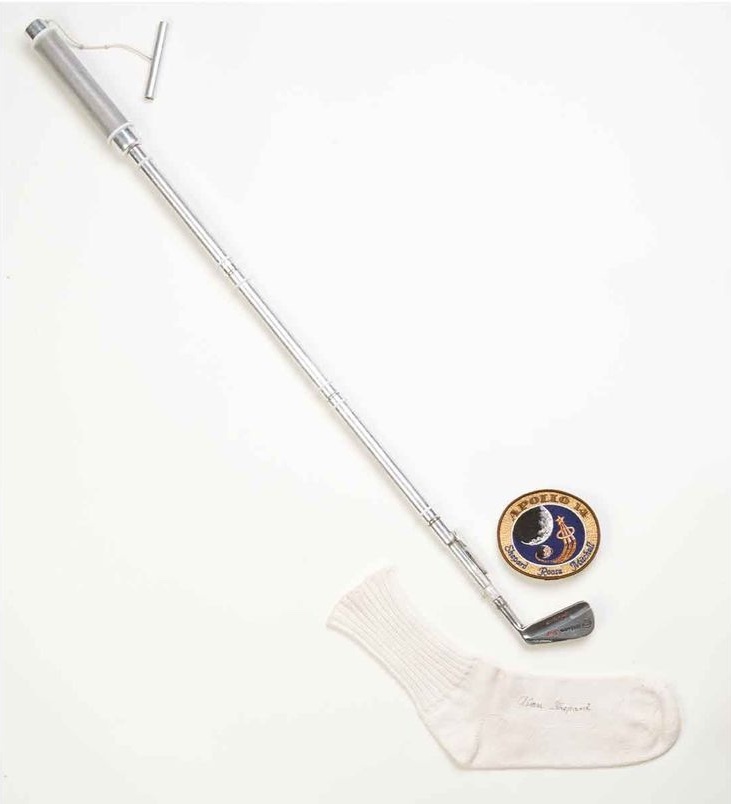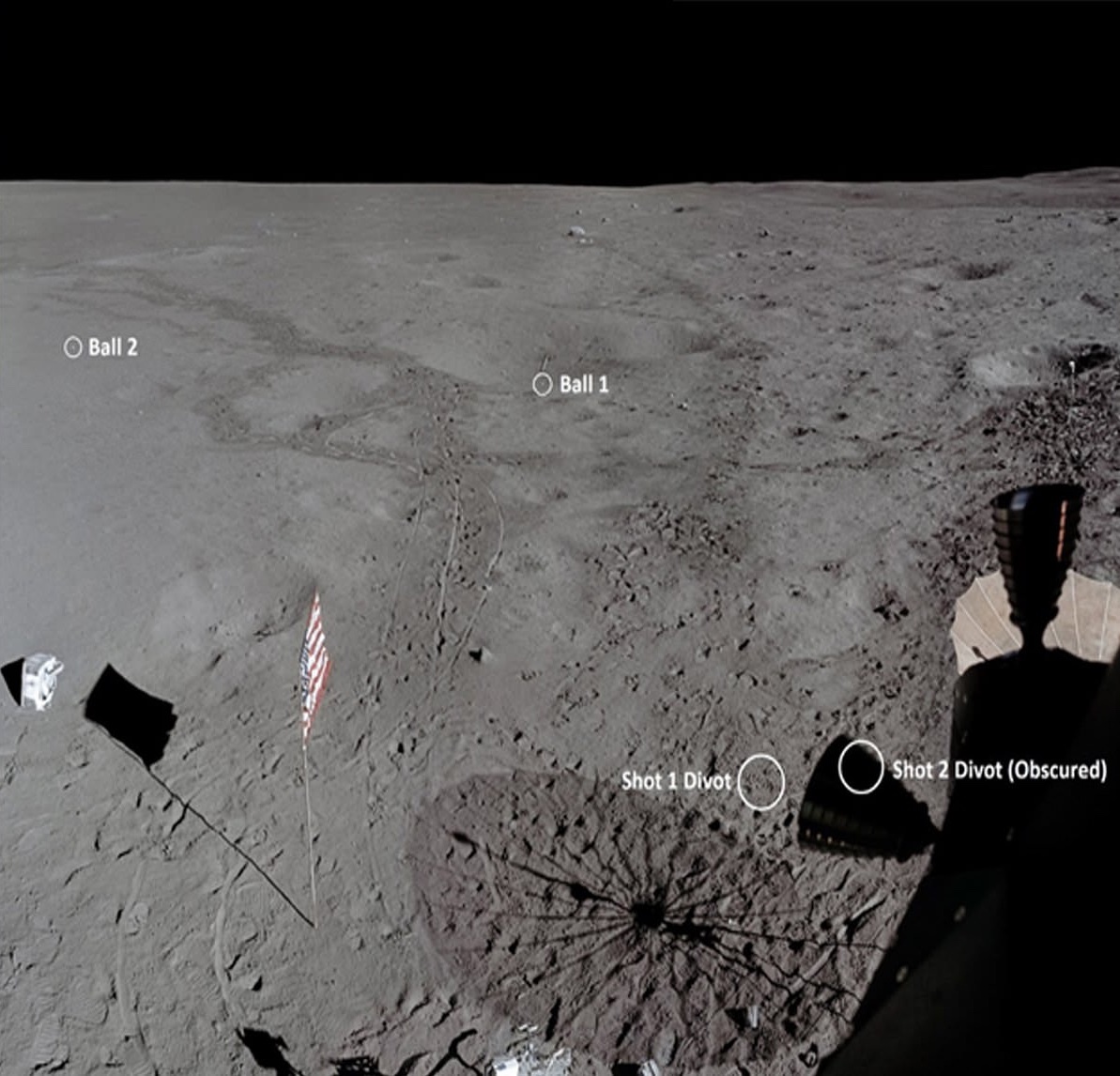Sign up for our daily newsletter
Latest news, reviews, analysis and opinion, plus unmissable deals for bunkered subscriptions, events, and our commercial partners.
Alan Shepard made a career out of boldly going where no man had gone before.
In 1961, he became the first American to travel into space, venturing into the great unknown aboard the Freedom 7 spacecraft.
Ten years later, as the commander of the Apollo 14 mission, he went even further, this time to Moon. Just the fifth man to walk on the lunar surface, he used the occasion to become the first to hit golf shots on it.
The idea first came to Shepard in the early 1960s. The story goes that he was giving a tour of the NASA facility to comedian Bob Hope. A die-hard golfer, Hope reportedly carried a golf club with him wherever he went. That prompted a conversation with Shepard – a keen golfer himself – about taking a club into space.
• “I was the first man to win with the Pro V1”
Fascinated by the prospect, Shepard decided to investigate the idea in more detail. He took the clubhead of a Wilson Staff Dyna-Power 6-iron to Jack Harden Sr, the head pro at the River Oaks Country Club in Houston, who rigged it so that it could be attached to a sample collector Shepard planned to use on the Moon. The collector folded down like a tent pole and weighed around four and a half times as much as the clubhead.
That last detail might seem insignificant but it’s not. An additional 1,000 pounds of fuel was needed for every pound added to the space capsule. Weight wasn’t just something. It was everything.

Having developed his plan, Shepard took it to NASA director, Bob Gilruth. Initially opposed to the suggestion, Gilruth came around when Shepard offered him a deal.
“If we have screwed up, if we have had equipment failure, anything has gone wrong on the surface where you are embarrassed or we are embarrassed, I will not do it,” he said. “I will not be so frivolous.
“I want to wait until the very end of the mission, stand in front of the television camera, whack these golf balls with this makeshift club, fold it up, stick it in my pocket, climb up the ladder, and close the door and we’re gone.”
• What is CBD (and will it make you a better golfer)?
Gilruth agreed. Rumour has it that, in the months prior to launch, Shepard prepared to take golf to new frontiers by putting on his space suit and going to a course in Houston where he practiced hitting shots out of a bunker.
On February 6, 1971, and with the mission having gone to plan, the moment arrived.
About 30 miles north of the Fra Mauro crater, Shepard pulled out his modified club and threw down a ball into the sandy surface.
“Houston, you might recognise what I have in my hand as the contingency sample return,” he told Mission Control. “It just so happens to have a genuine 6-iron on the bottom of it. In my left hand, I have a little white pellet that’s familiar to millions of Americans.”
• Lee Westwood: My life in pictures
Forced to swing one-handed because of his heavy, pressurised spacesuit, Shepard’s first effort was by no means befitting of the occasion – a shank into a crater.
He had a couple more swings before finally hitting one flush. He joked that his ball travelled for “miles and miles and miles” as a result of the low gravity conditions on the Moon (roughly one-sixth of the force of gravity on the Earth). Recent research by British imagery specialist Andy Saunders suggests it probably went no more than 40 yards.

Pic: NASA / JSC / ASU / Andy Saunders
After safely returning home, Shepard donated his modified club to the USGA. It is now on permanent display in the USGA Museum in New Jersey. A replica was commissioned and given to the Smithsonian National Air and Space Museum in Washington DC.
Whilst the make and model of Shepard’s club has long been known, he never divulged details of the balls he took into space. By all accounts, he was keen for his moment not to become the subject of rampant commercialism.
• gWest – The great enigma of Scottish golf
However, speaking to the Associated Press earlier this week, Golf Channel analyst Brandel Chamblee – a friend of Jack Harden’s son – shed some light on them.
“Within the Hardens, the legacy is he gave him golf balls from the range that had ‘Property of Jack Harden’ on them,” said Chamblee. “Technically – if the balls aren’t melted – Jack is the only person who owns property on the moon.”
Shepard died in July 1998 at the age of 74 at his home in Pebble Beach. His ashes were later scattered over Stillwater Cove at the California resort.
With his albatross at the 1935 Masters, Gene Sarazen hit the ‘shot heard around the world’. Alan Shepard went one better. He hit the shot that echoed around the galaxy; a shot that endures and fascinates as much today, a half century on, as it did at the time.
ALL ABOUT THE MASTERS
More Reads

The bunkered Golf Course Guide - Scotland
Now, with bunkered, you can discover the golf courses Scotland has to offer. Trust us, you will not be disappointed.
Find Courses






